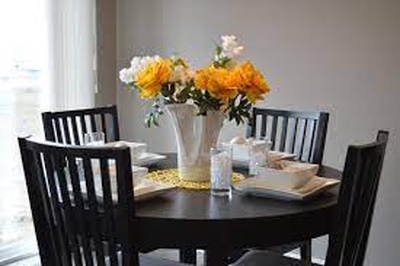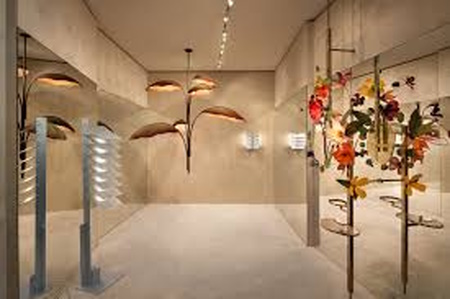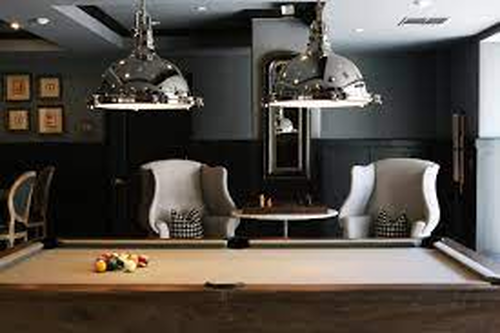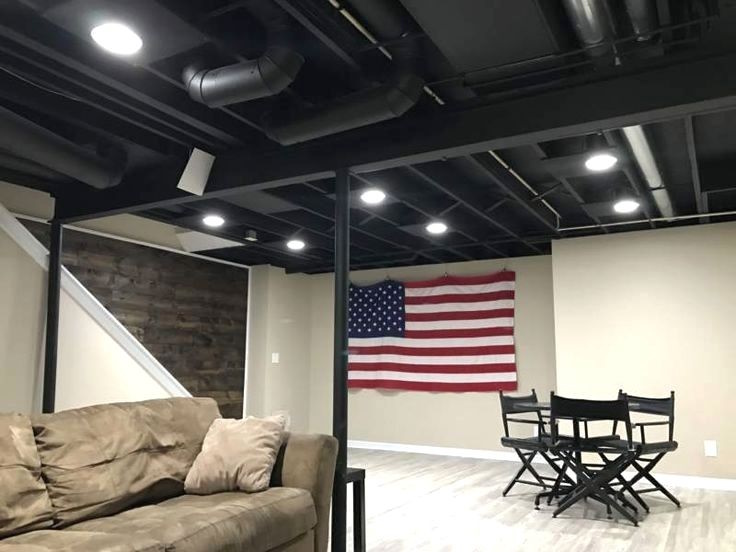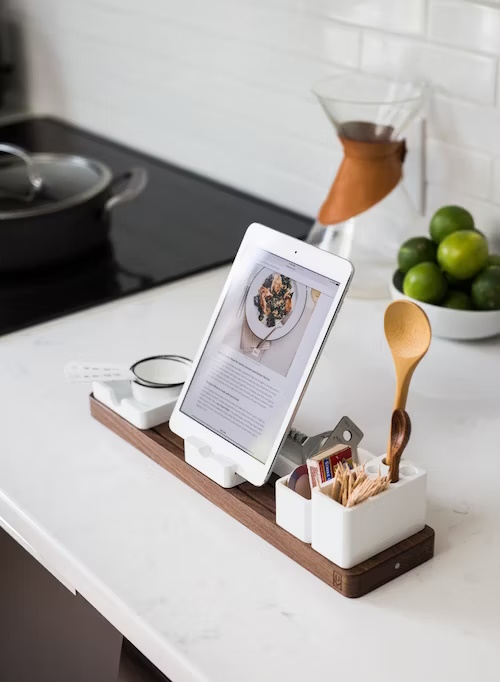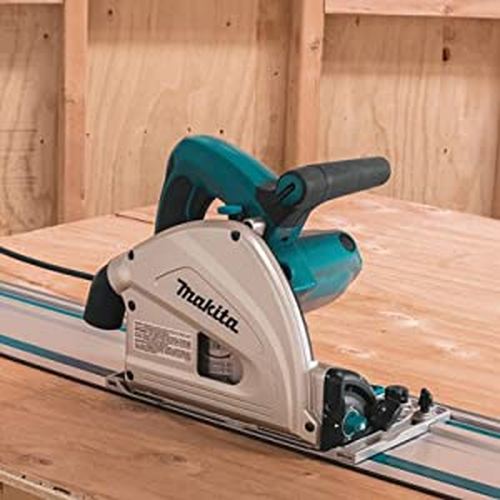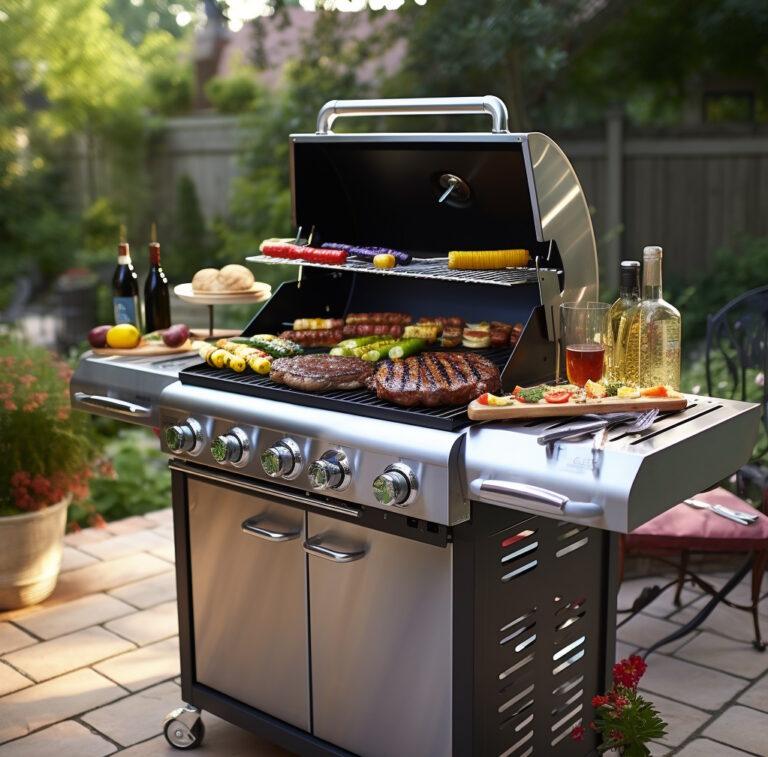Discover the Perfect Kitchen Table Dimensions for Your Space!
Find Your Ideal Kitchen Table Dimensions with Our Expert Tips!
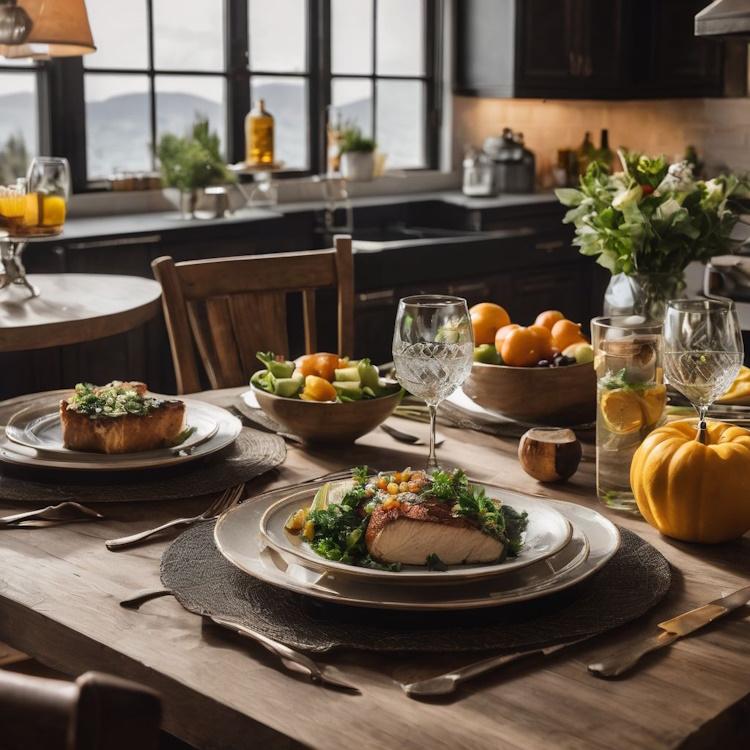
Have you ever found yourself scratching your head, trying to figure out what size table will fit in your kitchen? Choosing the right dimensions for a dining table is more than just picking one that catches your eye; it’s about making sure it fits comfortably in your space and accommodates all of your needs.
Whether you’re moving into a new home or looking to upgrade an old table, finding the perfect match can be tricky.
Did you know that most standard dining tables are about 30 inches tall? This height works well with different chair sizes and offers comfort for a variety of activities beyond eating, like homework or crafting.
This article is packed with valuable information that will guide you through measuring, understanding standard sizes, and considering seating capacity to ensure you find a kitchen table that fits neatly into both your room and lifestyle.
Get ready to dine in style!
Keep reading – we’re serving up all the insights you need!
Key Takeaways
- Most standard dining tables are about 30 inches tall, which fits well with different chairs and activities.
- Standard sizes for rectangular kitchen tables can range from 4 feet by 2.5 feet for small spaces to 8 feet by 4 feet for larger groups. Round ones vary from 3 to 5 feet in diameter.
- To choose the right size table, measure your space and remember you need at least 36 inches of room around it so people can move easily.
- You should think about how many people usually eat together when picking a table size. Remember that each person needs about two feet of eating space.
- There are lots of table shapes like rectangle, square, round, and coffee tables. Each shape fits into your home in a different way based on the room’s layout and how you use the space.
Understanding Table Dimensions
Standard sizes for dining tables and the ideal height for a dining table will be discussed in this section. We’ll also cover considerations for seating capacity to help you determine the best size for your needs.
Standard sizes for dining tables
When selecting a dining table for your home, the dimensions are crucial for fit and function. Here’s a quick reference guide to standard dining table sizes in HTML table format:
| Table Shape | Standard Size (Length x Width) | Seating Capacity |
|---|---|---|
| Small Rectangle | 4 feet x 2.5 feet (48 inches x 30 inches) | 2-4 people |
| Medium Rectangle | 6 feet x 3 feet (72 inches x 36 inches) | 4-6 people |
| Large Rectangle | 8 feet x 4 feet (96 inches x 48 inches) | 8-10 people |
| Small Round | 3 feet diameter (36 inches) | 2-4 people |
| Medium Round | 4 feet diameter (48 inches) | 4-6 people |
| Large Round | 5 feet diameter (60 inches) | 6-8 people |
These measurements serve as a foundation when planning dining areas. Remember that personal preference and room layout may influence the final choice.
Standard height for dining tables
Most dining tables have a standard height of around 30 inches, allowing for comfortable seating and legroom. This height works well with most standard dining chairs, ensuring that people can sit comfortably without feeling too high or low in relation to the table.
Standardizing the table height also makes finding coordinating chairs easier and gives the dining area a cohesive look.
Considerations for seating capacity
The standard height for dining tables ensures that they can accommodate different chair sizes while providing enough space for people’s legs underneath. It also allows for flexibility when adding seat cushions or using chairs with varying leg lengths.
Considerations for seating capacity
 When choosing a dining table, consider how many people you need to seat regularly. A standard rectangular table typically accommodates 6-8 people, while a round table may comfortably seat 4-6 individuals.
When choosing a dining table, consider how many people you need to seat regularly. A standard rectangular table typically accommodates 6-8 people, while a round table may comfortably seat 4-6 individuals.
For larger gatherings, extendable tables offer flexibility in seating capacity. Keep in mind the space needed for each person and allow at least 24 inches of width per person for a comfortable dining experience.
Consider your usual number of guests and the available space when deciding on the ideal seating capacity for your table. Rectangular tables are popular for their versatility in accommodating different numbers of diners, while round tables create an intimate dining setting suitable for smaller groups.
Measuring & Space Guidelines
Learn how to accurately measure for a dining table and understand the space requirements to ensure a comfortable fit in your kitchen or dining area. Choosing the right size for your space is crucial, so we’ll provide you with helpful tips to make the decision easier.
How to measure for a table
To measure for a table, follow these steps:
- Start by measuring the space where the table will go, ensuring there’s enough room around it.
- Consider the width and length of the table to ensure a comfortable fit in the space.
- Keep in mind the number of people who will use the table regularly; this will help determine the size needed.
- Note any existing furniture or items that may affect where the table can be placed.
- Measure doorways and hallways to ensure that the table can be brought into the designated space without issues.
Space requirements for a dining table
When planning for a dining table in your kitchen or dining area, consider:
- The table should have at least 36 inches of space around it for easy movement
- If there are other furniture pieces in the room, ensure they don’t interfere with the chairs
- Allow enough space for chairs to be pulled out comfortably while still leaving room to walk around
- For rectangular tables, ensure there’s adequate space at either end for people to sit and move
- Round tables require less space around them, but consider the pathways and other furniture placement
Choosing the right size for your space
When choosing the right size for your space, consider the dimensions of the room and how much of it you want the table to occupy. Measure the area where you plan to place the table and ensure there is enough room for chairs to be pulled out comfortably.
It’s essential to maintain a clear walkway around the table as well.
Consideration should also be given to how people will move around when seated. Additionally, think about other furniture or features in the room that may affect your dining area’s placement and overall flow.
Types of Tables and Their Dimensions
Let’s explore the different dimensions of rectangle, square, round, and coffee tables to help you find the perfect fit for your space. Read on to discover which table size is best for your needs!
Rectangle tables
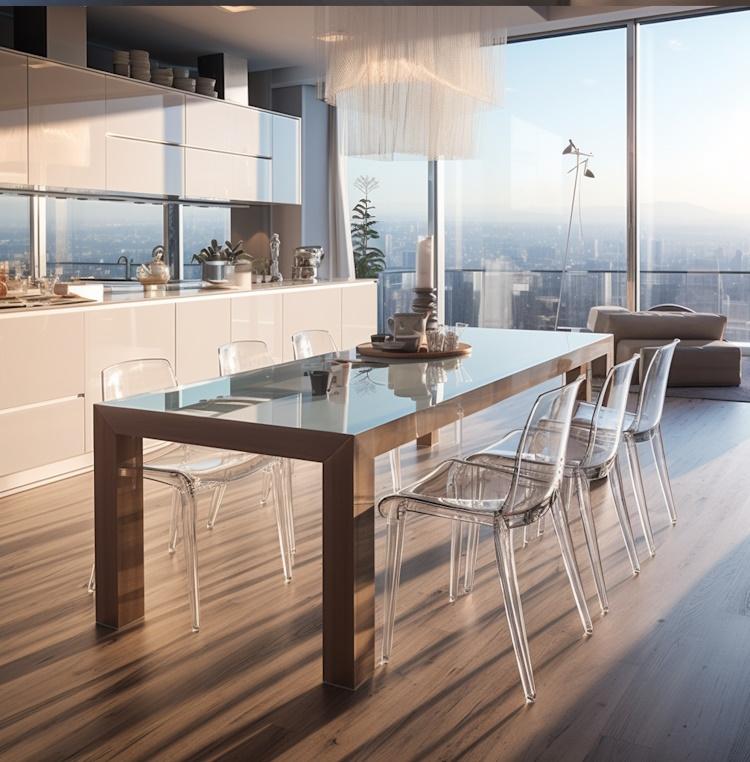
Rectangular tables are a popular choice for dining areas. They come in various sizes to fit different spaces and needs. Common dimensions for rectangular dining tables range from 36 inches by 48 inches for a four-seater, to 36 inches by 72 inches for six seats, and up to 40 inches by 96 inches for seating eight people comfortably.
When it comes to space efficiency, rectangular tables can work well in narrow rooms due to their elongated shape. The longer sides also make conversation across the table more convenient compared to round or square options. Additionally, when measuring your space and considering seating capacity, be mindful of allowing at least 42-48 inches between the table edges and any walls or furniture to ensure comfortable movement around the table.
Square tables
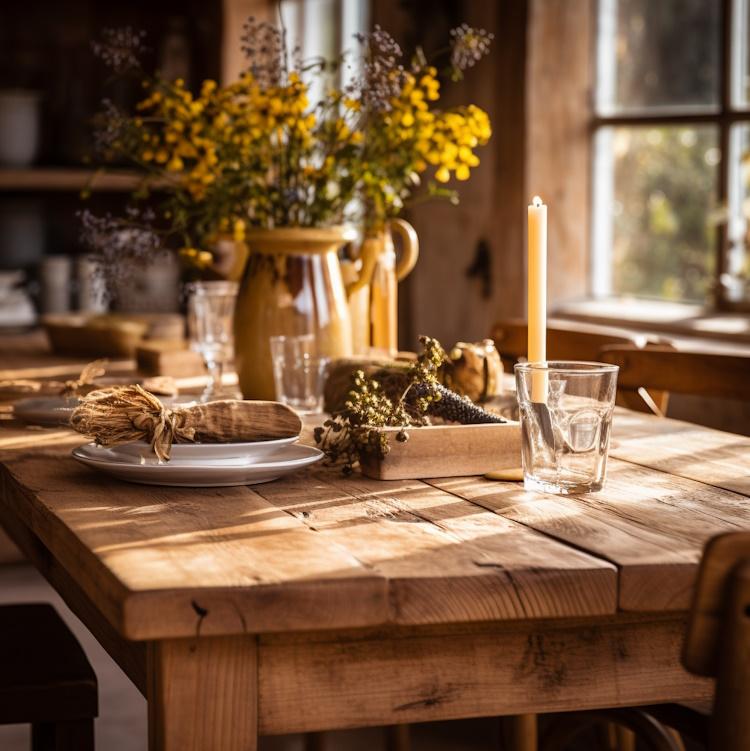
Moving on to square tables, let’s discuss this versatile option for your dining space. Square tables are a great choice for smaller dining areas or square-shaped rooms. They usually seat 2-4 people comfortably and can be an excellent fit for casual meals or cozy gatherings. When considering a square table, remember that the size should be proportionate to the room – not too big to make movement difficult, yet large enough for comfortable dining.
Square tables offer a stylish solution for those seeking a modern, space-efficient option. Many homeowners find them perfect for creating an intimate atmosphere in their kitchen or dining area without sacrificing style or functionality. With the right chairs and decor accents, square tables can elevate your interior design while maximizing seating capacity in limited spaces.
Round tables
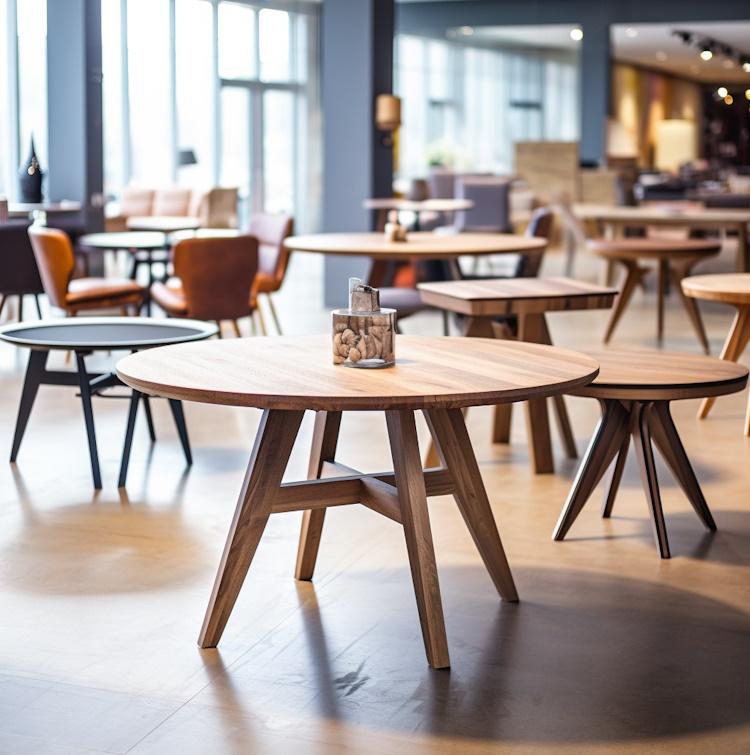
Round tables are a popular choice for dining areas. They come in various sizes, ranging from small to large, and can comfortably accommodate different numbers of people. The standard diameter for round dining tables ranges from 36 inches to 72 inches, with the smaller end seating about four people while the larger ones can seat up to eight. When considering a round table, it’s important to measure your space carefully to ensure there is enough room for chairs and traffic flow around the table.
Round tables are an excellent option for those looking to create a cozy and inclusive atmosphere during meals or gatherings. Their lack of corners makes them ideal for smaller spaces, allowing easy movement around the table without bumping into sharp edges. Additionally, they promote conversation by allowing everyone at the table to see each other easily. Whether you prefer a classic wood finish or something more contemporary like glass or metal, there are varied options available that suit different interior styles and personal tastes in home decor and kitchen design.
Coffee tables
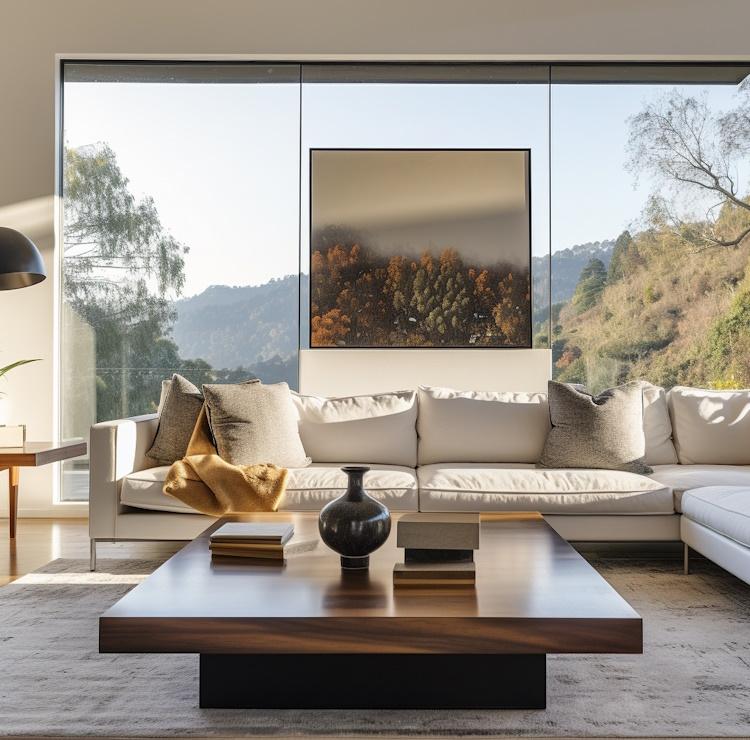
Now, let’s shift our focus to coffee tables. These low-standing tables are typically placed in living rooms and lounges. They usually range from 16 to 18 inches in height, making them a perfect companion for sofas and armchairs, providing a convenient surface for placing beverages, magazines, or decorative items.
When it comes to choosing the right size for your space, consider the dimensions of your seating area. Coffee tables are often designed to be about two-thirds the length of your sofa and should be placed at a comfortable distance from surrounding furniture. Some popular sizes include those measuring around 48 inches long by 24 inches wide. When looking at customizable options or resources for coffee tables, keep in mind the overall style and functionality you desire for your living space.
Finding the Perfect Table for Your Space
When it comes to finding the perfect table for your space, there are a few important factors to consider such as the layout and size of your room and how many people you need to accommodate.
Popular bloggers can provide great insight into recommended table sizes for different spaces, and don’t forget to explore customizable options if you have specific dimensions in mind.
Important factors to consider
Consider the size of your space and how much room you want for movement. Think about the number of people you usually have at the table. Also, take into account any specific needs or preferences, like having extra space for serving dishes or using extendable tables.
Best Breville Coffee Makers For Your Home (2024) (wherecanibuythat.us)
It’s important to consider your dining area’s overall style and design. The table should complement the rest of your kitchen or dining room furniture. Additionally, think about whether you want a standard-size table or if customization is necessary based on your specific requirements and available resources.
Popular table sizes, according to bloggers
When looking for the perfect table size, it’s helpful to consider the recommendations of experienced bloggers. Here are popular table sizes suggested by bloggers to help you choose the right one for your space:
- The dimensions typically range from 36″ x 48″ to 36″ x 60″ for a rectangular table that seats four, providing a cozy dining space without overcrowding.
- If hosting six people is your aim, opt for a rectangular table measuring around 36″ x 72″. This size ensures comfort and ample elbow room for each diner.
- A round table with a diameter of 48″ or 54″ is ideal for seating four to six individuals while promoting intimate conversations over meals.
- When accommodating eight guests, consider an oval table with dimensions around 42″ x 72″. The elongated shape offers flexibility in seating arrangements and encourages social interaction.
- In open floor plans or outdoor settings, bloggers often recommend larger tables such as a rectangular table measuring approximately 40″ x 96″, comfortably seating ten people and making a striking centerpiece.
Trash Talk: The Perfect Kitchen Trash Can Size (wherecanibuythat.us)
Tips for open floor plans and outdoor spaces
When considering open floor plans or outdoor spaces, opt for a table that complements the overall design and allows for easy movement around it.
- Choose a table that fits the scale of the space while leaving enough room for walking and other furniture.
- Consider materials that can withstand outdoor conditions, such as durable woods or weather-resistant metal.
- Look for tables with adjustable or removable leaves to accommodate different gathering sizes in open areas.
- Opt for versatile designs that can transition from indoor to outdoor use seamlessly.
- Prioritize easy-to-clean surfaces and low-maintenance construction suitable for outdoor exposure.
- Utilize benches or modular seating options to maximize space efficiency in open floor plans and outdoor settings without compromising comfort or style.
Customizable options and resources.
When considering customizable options and resources for your kitchen table, it’s essential to think about materials, finishes, and additional features. Look for custom-made tables that allow you to choose the wood type, color, and size to fit your space perfectly.
Consider extendable tables for flexible seating arrangements when hosting guests or if you have limited space. Explore different leg styles and shapes to match your preferred design aesthetic.
When it comes to resources, online furniture stores offer a wide range of customizable options with detailed product descriptions and measurement guidelines.
Conclusion
In conclusion, understanding kitchen table dimensions is crucial for creating a functional and inviting space. By following the practical guidelines provided in this comprehensive guide, you can confidently choose the perfect table size that suits your needs.
Considering factors such as seating capacity and available space will ensure efficiency and comfort in your dining area. This emphasis on practicality can lead to significant improvements in both the functionality and aesthetics of your kitchen or dining room.
Explore further resources and customizable options to tailor your choice according to your preferences. Take charge of transforming your dining space with the right table size – it’s an essential step towards creating a welcoming environment for family and guests alike!
FAQs
1. What are standard kitchen table dimensions?
Standard dining table dimensions vary, but a typical kitchen table height is about 30 inches and can fit into most dining spaces comfortably.
2. How do I choose the perfect kitchen table size?
To choose the perfect kitchen furniture size, consider the room’s size and seating capacity for dining tables, and allow for enough space around the table for movement.
3. What are the ideal sizes for different seater dining tables?
For a four-seater, rectangular dining table dimensions typically measure 36 to 40 inches wide by 48 inches long; six or eight-seaters need larger sizes accordingly.
4. Can you tell me the circular dining table dimensions?
Circular dining tables usually have 36 to 54 inches in diameter and can seat from two to six people based on standard measurements.
5. Are extendable dining table dimensions different from fixed ones?
Yes! Extendable dining tables can be smaller in their non-extended state but grow larger with leaves or sections added to accommodate more guests as needed.

